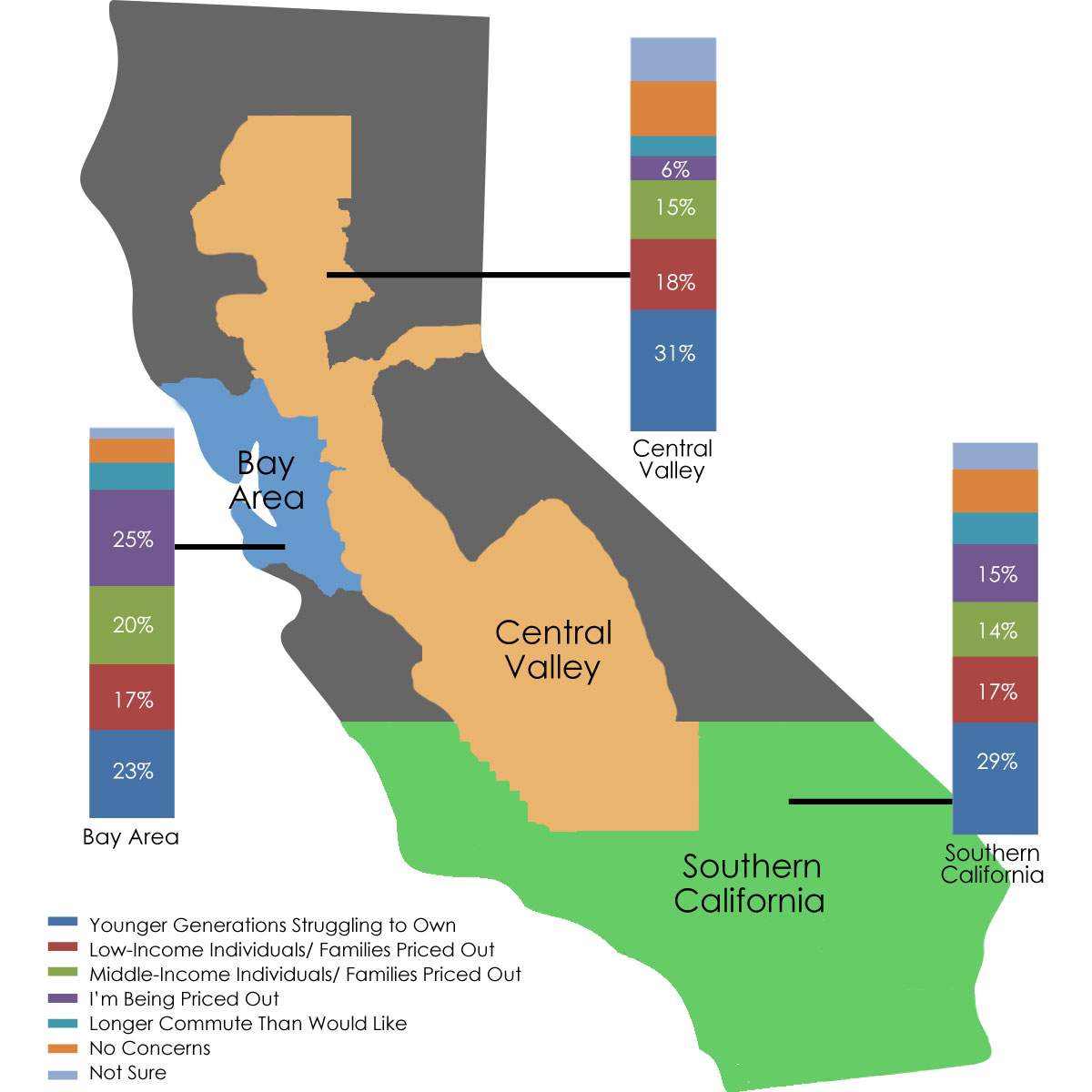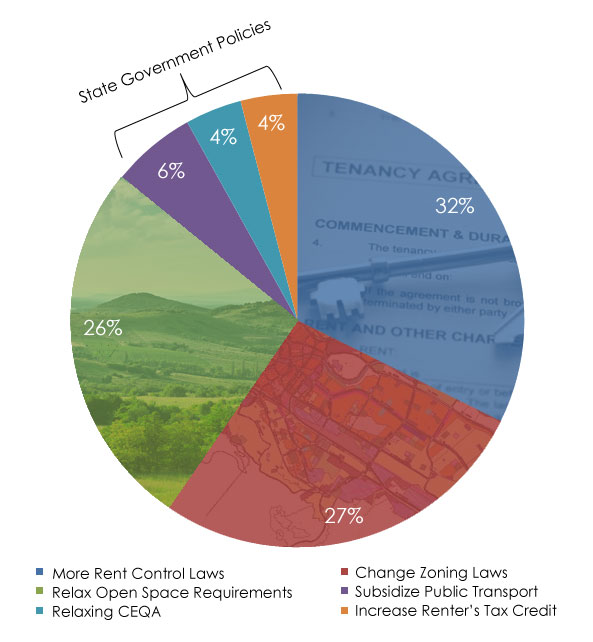- Politics, Institutions, and Public Opinion
- State & Local
- California
California’s housing prices are the 2nd highest in the country (second only to Hawaii); according to Zillow, Californian home values and rental prices are roughly 2½ times and 1½ times, respectively, the national averages. Homeownership is a signifier of upward economic mobility, but many Californians cannot afford these daunting prices. Overall, Californians see this crisis as a threat to the California Dream, presenting Sacramento and local elected officials with another daunting problem to solve.
To learn more, the latest Hoover Institution Golden State Poll examines opinions of California adults living within the Bay Area, Central Valley, and Southern California regions on housing prices and affordable housing policies.
Property ownership enables individuals and families to put their equity to work leading to enhanced opportunities for economic mobility. However, among those adults surveyed living in the Bay Area, Central Valley, or Southern California, just 45 percent said they are homeowners versus 43 percent who said they are renters. While the three regions are evenly split, Californians who would benefit most from strong economic mobility are renters including majorities of 18-29 year olds and 30-44 years olds (52 percent and 53 percent, respectively), 49 percent and 66 percent of Latinos and Blacks are renters, and by almost 3-to-1, low-income Californians rent. Meanwhile, 53 percent of white Californians, 77 percent of 65 and older Californians, and 71 percent of higher-income Californians are homeowners.
While many are renting, a strong majority would prefer to own. As a good indication of high homeownership demand, Californians, statistically, gauged no difference in the housing market competiveness between the one in which they currently live and the one in which they’d prefer to live (55 percent very or somewhat competitive versus 53 percent). Regardless of where Californians decide to live, there is little relief on the horizon. Moreover, when presented with five types of housing development, ranging from apartment-only buildings to single-family homes with large yards spread farther apart, a majority of Californians strongly or somewhat supported constructing more of the classic home: single-family, big yards, and not close to your neighbor. In fact, this was the only development choice to receive a majority, and from those most eager to achieve a slice of the Dream (younger Californians, Latinos, and low-income Californians), this option was endorsed by roughly 60 percent.

The California Dream is best characterized by the belief that, by coming to the Golden State and working hard, (and with a dash of good luck), an individual can strike success. Yet with homeownership out of reach for the median household, and rental prices just as much a strain on household budgets, the Golden State Poll tested a series of concerns related to the affordability crisis. Three-fourths of Californians named “younger generations will have a difficult time owning a home” (28 percent), “low-income individuals/families being priced out of the area” (17 percent), “middle-income individuals/families being priced out of the area” (15 percent), or “I’m being priced out of the area in which I currently live” as their top concern, showing deep anxiety that the lack of affordable housing is seriously impacting most Californians ability to achieve the cornerstone of success. In fact, a plurality named one of the four California Dream-centric concerns as the top concern across all demographics and regions.
Californians appear to have accurately assessed the problem. But when it comes to the solution, they seem to put short-term gratification over long-term, sustainable results. Among the three state-level and three local government policies to improve housing affordability tested, Californians sided with solutions that will attack the crisis’ symptoms, but do little to address the underlying cause. 54 percent strongly or somewhat support Sacramento subsidizing regional public transportation to ease commutes over increasing the renter’s tax credit (40 percent) or relaxing CEQA to encourage more housing construction (33 percent). On the local government policies, 47 percent strongly or somewhat support passing more rent control laws over changing zoning laws (38 percent) or relaxing open space requirements (36 percent), both which would encourage more construction. The only long-term solution to California’s housing affordability crisis is more housing supply. But that takes time. And it appears Californians are less willing to wait, even if those policies solve the problem.

While California has had a housing affordability problem for more than 30 years, it may just now be threatening the California Dream since the state’s economy has significantly shifted from a diverse, across-the-state economy to a Silicon Valley/Bay Area-centric economy, where the housing crisis is particularly acute – 78 percent in the Bay Area, the most among the regions surveyed, said housing prices are very or somewhat expensive. And this has implications. As more of the state is reliant on jobs in just one area – particularly an area as unwilling to endorse pro-growth policies as the Bay Area (relaxing CEQA, changing zoning laws, and relaxing open space requirements received the most opposition among the three regions) – those Californians seeking homeownership are facing immense friction. Regardless of Californians’ decisions when faced with the affordability crisis (i.e. move or spend more of their income on housing), California’s economy will eventually suffer. And without a vibrant economy, the California Dream that so many have realized could become a distant memory – and for others, an unobtainable goal.
Note: Unless specifically noted, all references to Californians in this analysis refer to Californian adults residing in the Bay Area, Central Valley, and Southern California.
 The California Dream
The California Dream
As historian H.W. Brands observed, the California Dream was cultivated during the Gold Rush and inspired the new American Dream. As an idea that California is a place of good fortune and opportunity where new beginnings and hard work yield great success, wealth, and/or fame, the Dream spurred iconic institutions like Hollywood, Silicon Valley, the aerospace industry, and Napa wine country. And central to the idea of the California Dream has always been the ability for anyone to own a private home to start anew.
















